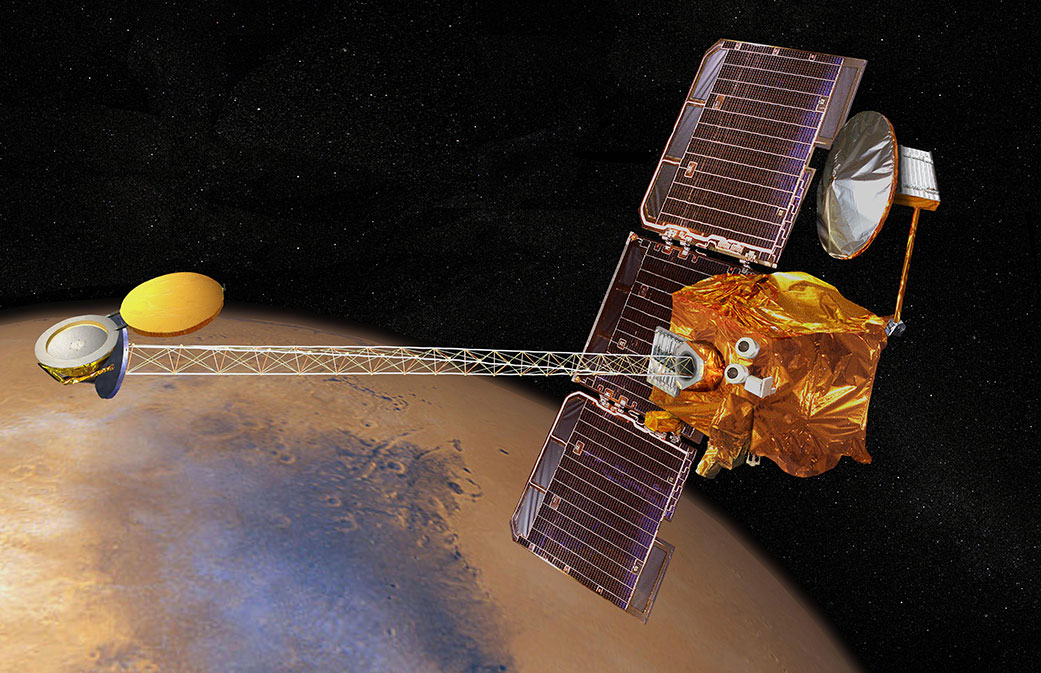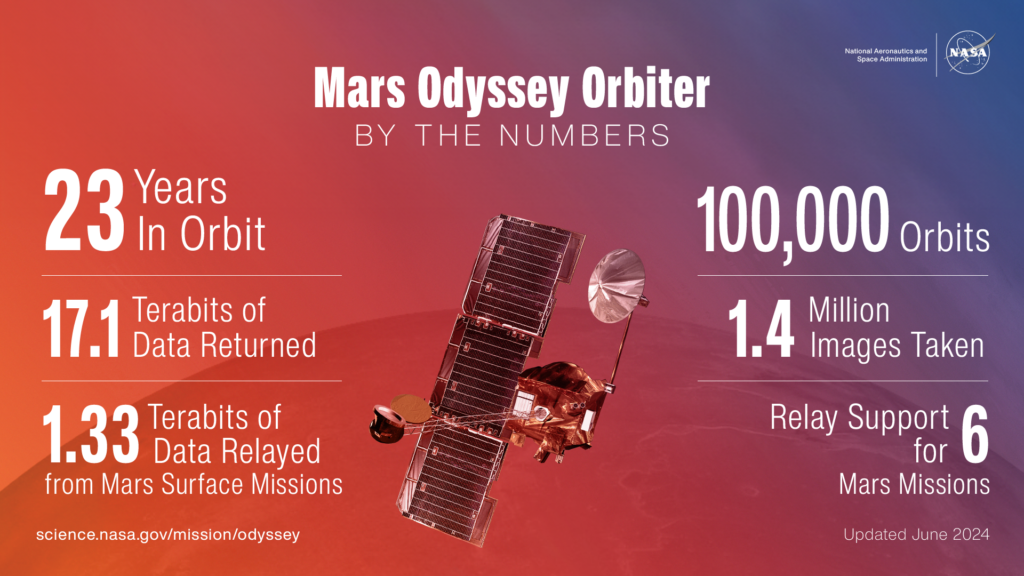On June 30, the Mars Odyssey spacecraft will celebrate a round number: its 100,000th orbit around Mars. In honor of this event, it took an unusual photo of Olympus Mons. It shows the largest volcano in the Solar System at the angle to the horizon, roughly as an astronaut in orbit around the Red Planet would see it.
Oldest Martian mission
This year Mars Odyssey celebrated its 23rd birthday. The spacecraft was named in honor of the famous novel Space Odyssey 2001. It was launched in April 2001 and entered a permanent orbit around Mars in October of that year.

The main goal of the mission was to map the Martian surface. Over the years, the spacecraft has taken almost one and a half million images of the Red Planet in the visible and infrared ranges, compiling a global map of the planet. Subsequently, it was used to select landing sites for the next Martian missions. Mars Odyssey also managed to detect large reserves of water ice under the surface of the Red Planet, collected data on radiation conditions in its vicinity, studied seasonal changes in the polar caps and surveyed Phobos. As of 2024, the total amount of science data collected by Mars Odyssey is 17.1 terabits.
Mars Odyssey had another very important task. It served as the main repeater for the Spirit and Opportunity rovers, transmitting to Earth about 85% of the information collected by them. Mars Odyssey data was also actively used to select landing sites for other missions, including Phoenix and Mars 2020. In total, it sent 1.33 terabits of data from other missions back to Earth during its service.

Mars Odyssey is currently the longest-lived Martian lander in history. Despite its advanced age, the lander is still in service and collecting important data. Last year, mission specialists decided to use it in a new mode to obtain “horizontal” images. They are similar to the way astronauts aboard the ISS see the Earth.
Mars Odyssey uses the THEMIS infrared camera for horizontal imaging. Such images are important because they provide a cross-section of the layers of the Martian atmosphere, allowing scientists to learn more about its structure and the distribution of clouds and dust.
Olympus Mons: Horizontal view
On June 30, Mars Odyssey will make its 100,000th orbit around Mars. Mission specialists decided to celebrate the upcoming anniversary with a horizontal image of Olympus Mons, the largest volcano in the Solar System. It rises 26 km above the surrounding surface, with a base diameter of 600 km. This is comparable to the distance from Kyiv to Warsaw.

The photo was taken on March 11. It allows you to visualize how much Olympus Mons rises above the surrounding landscape. Because it was captured in infrared, the colors don’t match what the human eye would see. The bluish-white streak in the lower atmosphere hints at how much dust was in the area in early autumn, when dust storms usually begin. The purple layer above it is probably a mixture of reddish dust with bluish clouds of water ice. Finally, you can see the blue-green layer at the top of the image, where clouds of water ice rise about 50 kilometers into the sky.
According to mission specialists, they plan to take new horizontal images of Mars in the future to learn more about its atmosphere. They have about a year and a half to spare. According to the latest estimates, the remaining fuel on board Mars Odyssey will be enough to continue operations until the end of 2025.
According to NASA


